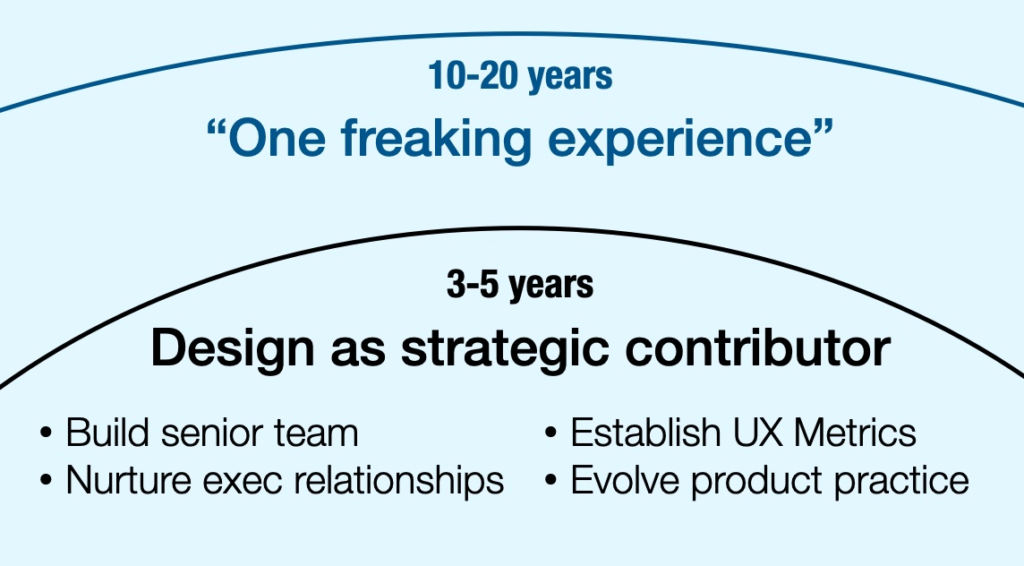That Vision Thing
About a year ago, I distilled the conversations Jesse and I had been having with design executives on our podcast Finding Our Way into a post titled, “Design leadership is change management.” And the first element needed to drive change? Vision, which I defined as “an orientation, pointing the team in the right direction. Even better, it’s a destination to which people are being led.”
Over this past year, in working with design leaders who have found articulating a vision to be challenging, I’ve put more shape around my thinking, and found myself repeatedly returning to an example, which I thought I’d share here.
Vision or Agenda?
Before getting to the example, a quick nomenclature check.
I think a stumbling block for design leaders when it comes to “vision” is that “vision” often means something very specific in design: a north-star-style depiction of a future state experience. But the change that a design leader seeks can incorporate so much more—it could involve new ways of working (double diamond; embracing product discovery), or the desired impact on the business and their customers. So instead of “vision,” I advocate for the word “agenda.” It doesn’t have the baggage of “vision,” and it also makes clear that, as a leader, it’s incumbent that you have a (dare I say) political point of view, a cause for which you’re advocating.
An Example of an Agenda
Among the design executives Jesse and I interviewed was Kaaren Hanson, Chief Design Officer of Chase Bank. Early in our discussion, when defining her role, she identified four initiatives: building a senior team, nurturing executive relationships, establishing UX metrics, and evolving product development processes. Later in our discussion, which sharing how she would align the efforts of her 800+-person team, she emphasized how they’re all creating “one freaking experience.”
As I sought to put shape on the ideas of agenda and vision, I realized I could use what Kaaren shared. In a company as complex as Chase Bank, achieving “one freaking experience” could take 10, even 20 years (because it requires not just internal alignment, but may need regulatory change as well). It makes for a powerful long-term agenda (and, in this case, is also a vision). The four initiatives she outlined could be grouped in a near-term agenda of “Design as strategic contributor,” a 3-5 year program (my estimate) that, by establishing Design as a credible business partner, sets the company on the course of delivering on “one freaking experience.”

Take the time to do this for yourself
As I write this, it’s the start of the new year. A worthwhile activity for any design leader would be to sit down, even for just 30 minutes or so, and write down their agenda. Have both a long-term agenda (though 10-20 years is probably excessive for most folks) and a nearer-term one that ladders up to it. This agenda may be something you share with your team (to drive alignment) or it may be personal (perhaps about your career goals). Making this concrete will enable you to make better decisions throughout the year, as you’ll have a clear organizing principle to go by.